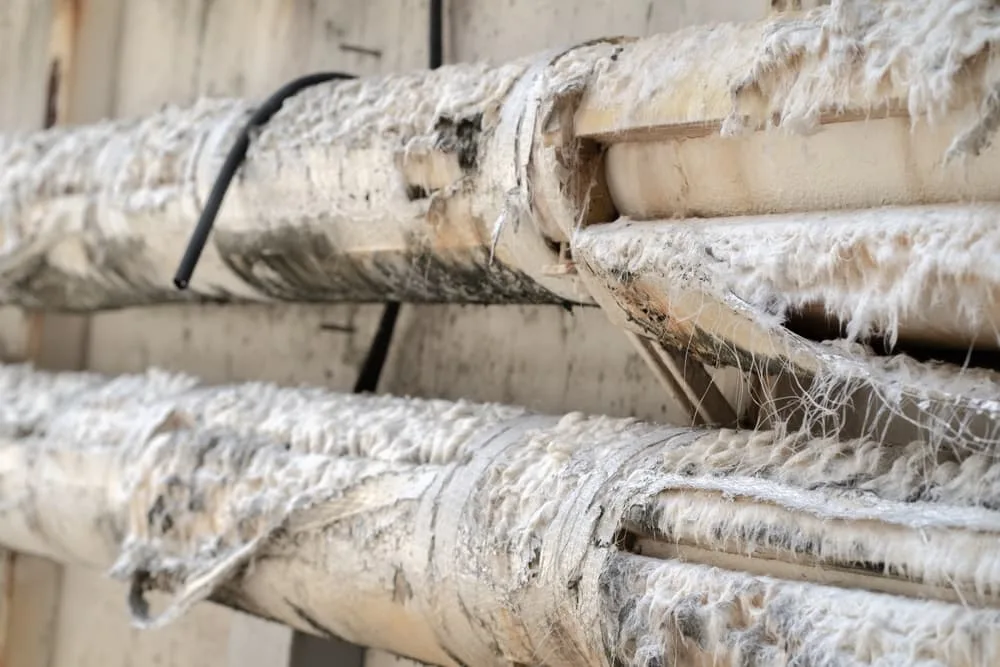Building materials, such as insulation for homes, offices, and other structures, once extensively used asbestos. Asbestos exposure can cause anything from relatively mild illnesses to catastrophic diagnoses. Since so many of us still live and work in older buildings, asbestos insulation is likely present.
However, while we no longer use asbestos to the same extent, property owners and real estate agents must recognize and detect materials that may have asbestos. Understanding how to protect yourself and others starts with knowing what it looks like, its common uses and locations, and why it poses serious health risks.
Navigating the intricate path to securing compensation in an asbestos exposure case demands the expertise of seasoned attorneys. Get in touch with an asbestos lawyer now to explore the best steps for your case.
What Does Asbestos Look Like?

Asbestos occurs naturally as a grayish, silver rock crystal with closely wound fibers underground or in mines. Once the industry mines, breaks down, colors, and manufactures asbestos with other materials like insulation, it is harder to identify.
Asbestos may look similar to many safe, modern alternatives, but it possesses characteristics that can help in its identification.
Typically, the texture of asbestos insulation is fairly distinct. It consists of coarse, tightly packed fibers that are often much denser than non-asbestos insulation and may have a more irregular texture.
Fibers of this type are strong and heat-resistant, making them ideal for many products and applications.
Although government officials have outlawed most uses of the mineral, no federal laws mandate property owners to disclose the presence of asbestos in a sale.
Inhaling dust from destroying or disturbing asbestos-containing materials through house renovations or other activities can cause deadly health problems. If you’re buying real estate or discover worn-down tiles, pipes, insulation, or other products, find a certified local asbestos testing company to test and verify contamination.
Common Types of Insulation That Contain Asbestos
Asbestos-containing thermal insulation includes spray-on, loose-fill, wrap, and block products. The construction and shipbuilding industries, as well as the automotive industry, often use these materials. Many companies have taken steps to phase out the use of these materials and replace them with safer alternatives.
Loose-Fill Insulation
Many buildings use this fluffy, lumpy insulation material to fill hollow spaces in structures by pouring it on attic floors or blowing it into empty spaces. Its loose composition makes it easily disturbed by the slightest wind, sending dangerous inhalable asbestos fibers into the air.
Insulation Wrappings
Insulation of this type was molded to insulate pipes, ducts, and other plumbing systems. As wrapped insulation ages, it can crumble, releasing asbestos dust into the air. This type of insulation was a major health hazard on Navy ships for decades. Pipes also had asbestos wool insulation, which contains asbestos fibers that often disperse due to wear and tear.
Block Insulation
Block insulation looks like slabs or bricks but is entirely made of asbestos, making it particularly risky. These were often secured to the inside of the walls of buildings to insulate equipment, including boilers.
Spray-on Insulation
Companies might apply spray-on asbestos to large steep beams, ceiling boilers, furnaces, and other heat-generating equipment. It is common in industrial and commercial buildings and is one of the most dangerous types because it is readily released into the environment when touched.
The U.S. bans spray-on insulation containing more than 1 percent asbestos without a bituminous or resinous binder.
Asbestos is likely present in older houses built before 1980 unless testing proves otherwise. Professional testing is the only way to determine whether the insulation is safe.
The Health Risks of Asbestos Exposure
An asbestos-containing product contains more than 1 percent of asbestos minerals. Whenever asbestos fibers get inhaled, they can get stuck in the lungs and irritate the tissues inside. The more asbestos exposure you have, the greater the risk of developing asbestos-related diseases.
A person who breathes asbestos can develop non-cancer diseases such as:
- Asbestosis usually occurs in people with long-term asbestos exposure. In asbestosis, the lungs become scarred due to breathing in asbestos fibers. Symptoms of asbestosis may not appear for years.
- Pleural disease is a non-cancerous lung condition that affects the membrane surrounding the lungs and chest cavity. Although not all people with pleural changes suffer from breathing problems, some may have less efficient lung function.
Cancers from asbestos exposure include:
- Lung cancer – A malignant tumor that invades and blocks the lung’s airways. Asbestos exposure and smoking tobacco significantly increase the risk of lung cancer.
- Mesothelioma – A rare cancer caused only by asbestos exposure. This cancer can attack the membranes that cover the lungs and chest cavity, the membrane lining the abdomen, or the membranes surrounding internal organs. A person exposed to asbestos may not show signs of mesothelioma for 30 to 40 years.
Asbestos exposure can also cause cancer of the larynx, ovaries, pharynx, stomach, and colorectum. Educating yourself about the dangers of asbestos exposure and the likelihood of asbestos being present on your property is the only way to stay safe.
For proper asbestos testing and removal, call a professional and never attempt to test asbestos insulation yourself, as you can spread the fibers and endanger yourself.
Learn More About How An Asbestos Lawyer Can Help
The long and complex road to retrieving compensation in a case involving asbestos exposure requires guidance from the right attorneys. They can recover the compensation you need to pay for the necessary medical treatment.
Need help filing a claim? Contact an asbestos injury attorney today to discuss your options for moving forward.



